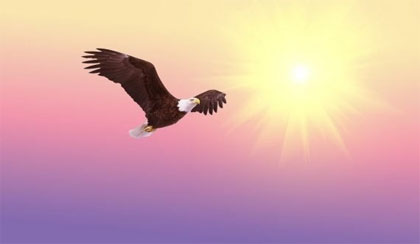
Terrifying 25-Million-Year-Old Eagle Hunted Koalas in Australia
Jocelyne LeBlanc September 30, 2021
A new species of prehistoric eagle terrorized koalas in Australia around 25 million years ago. The remains of the newly identified eagle species, which has been named Archaehierax sylvestris, was part of a family of raptors named Accipitridae — these included eagles, hawks, kites, and Old World vultures.
The bones were found in Lake Pinpa which is a salt lake that is located east of the Flinders Ranges in South Australia. While Lake Pinpa is surrounded by sand dunes with very little trees and grass, that’s not how it looked millions of years ago as there was a bigger lake that stretched approximately 62 miles (100 kilometers) through a rainforest. The lake would have been inhabited by crocodiles, freshwater dolphins, and fish, while possums, koalas, and shorebirds occupied the shore. In an email to Live Science, Trevor Worthy, who is a vertebrate paleontologist and associate professor at Flinders University, stated, “Lake Pinpa, as a whole, is the most rich fossil site for this time period in South Australia.”
 (Not the Archaehierax sylvestris)
(Not the Archaehierax sylvestris)
A total of 63 bones were found by paleontologists in 2016 and the remains have since been analyzed. The first bones that were discovered were claws and a lower leg bone that is called a tarsometatarsus. At that point, the team of researchers brought a large piece of sediment back to their lab where they carefully extracted the bones. This is a very important and rare discovery as eagle fossils usually include only a few bones.
The very well preserved ancient species, which has no living descendants, is the oldest eagle fossil that has ever been discovered in Australia. It lived during the Oligocene Epoch (between 33.9 and 23 million years ago). The feet of the Archaehierax sylvestris measured 5.9 inches with long legs that supported them. This is how it was able to grab larger prey from trees such as koalas. It had fairly short wings, suggesting that it probably didn’t fly very fast and that it was more than likely much better at dive-bombing its prey.
 The Archaehierax sylvestris would grab koalas from trees.
The Archaehierax sylvestris would grab koalas from trees.
A picture of the sediment block that contained the fossils as well as an image of what the Archaehierax sylvestris would have looked like can be seen here.
The study was published in the journal Historical Biology where it can be read in full.
An exceptional partial skeleton of a new basal raptor (Aves: Accipitrida…
Ellen K. Mather
(2021). An exceptional partial skeleton of a new basal raptor (Aves: Accipitridae) from the late Oligocene Namba…
MU*

















